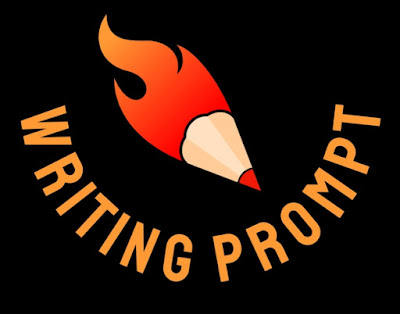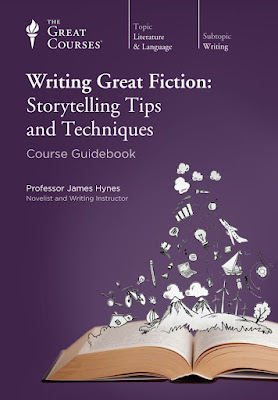by Randy Ingermanson
Advanced Fiction Writing
Your One-Sentence Summary
My friend Larry Brooks is an extremely well-known writing teacher. Last November, he released his latest book, Great Stories Don’t Write Themselves. I’ve been reading the book lately, and I’m not quite ready to review it here, but it got me thinking.
Larry is very big on the idea that great stories need a great “premise.” Which sounds obvious, but it’s hard to nail down, because different people mean different things by the word “premise.” Larry spends quite a fair bit of time disentangling the various meanings of the word. He’s also got a lot of practical insight on how you test the premise of your book to make it better.
It’s all good stuff, but “premise” is Larry’s thunder, not mine, so I won’t steal it. If you want to know what he says, you can read his book. I did a lot of highlighting in his book, and I’ll certainly be using his various tests on my current novel to see how well it works.
But all this talk of “premise” got me thinking of a subject that is most definitely part of my thunder—the idea of a one-sentence summary.
What Is a One-Sentence Summary?
A one-sentence summary is a sentence of up to 25 words that enflames the imagination of your Target Audience and repels everyone else.
See what I just did? I wrote a one-sentence summary about one-sentence summaries. That’s kind of meta.
Who would want to write a one-sentence summary? (That is to say, who is the Target Audience for the very notion of writing a one-sentence summary?) Novelists who want to be successful. That would be you.
Novelists who want to be successful know:
- They should market only to their Target Audience.
- Marketing is about exciting emotions.
- Good marketing actually drives away the “wrong sort of reader.”
So my one-sentence summary above is designed for just those people. Here’s what I did in that one-sentence summary:
- I used the phrase “Target Audience.” That phrase gets the attention of any market-savvy novelists.
- I used the phrase “enflames the imagination.” Those are emotive words, aimed at writers who want to attract the right sort of reader.
- I also used the phrase “repels.” Another emotive word, aimed at writers who want to drive away the wrong sort of reader.
How is a One-Sentence Summary Related to “Premise?”
Larry Brooks is big on “premise,” and rightly so, because a great premise is practically an absolute requirement for a great book. I’m big on writing a great one-sentence summary, because it distills a novel’s premise down to one sentence that makes an amazing marketing tool.
You will use your one-sentence summary forever to sell your book to:
- An agent you meet at a conference.
- The editor the agent sends your book proposal to.
- The publishing committee who decides whether to publish your book.
- The publisher’s sales team, if they still have one.
- The bookstore buyers.
- People browsing for books in the store.
- People browsing for books online.
- Anyone those people ever talk to about your book.
You need a one-sentence summary, whether your novel has a great premise or not. In fact, even if your premise isn’t spectacular, you still need a one-sentence summary, for a couple of reasons.
First, it catches people’s attention so you can sell them your book.
Second, it keeps you focused when you’re writing and editing the book.
An Example One-Sentence Summary
Larry’s book spends quite a bit of time analyzing a mega-bestselling novel by Robert Dugoni, My Sister’s Grave.
I had never read this novel, but Larry’s book got me interested, so I bought My Sister’s Grave. I’m in the target audience. It’s a legal thriller and I like legal thrillers.
I read the book and thought it was fantastic.
Here’s my one-sentence summary for My Sister’s Grave:
“A homicide detective learns that her sister’s grave has been found, with conclusive proof that the man convicted of the murder was framed.”
A few comments are in order:
My first cut at this sentence was 27 words. I clipped out a few and got it down to 23.
The Target Audience for this novel is readers who like either police procedurals or legal thrillers. The novel is a bit of both. There is some forensic work and some detective work and a long series of scenes in a courtroom.
Look at the emotive words and phrases in my one-sentence summary:
- homicide detective
- sister
- grave
- convicted
- murder
- framed
With one exception, these words are designed to attract readers specifically in the Target Audience. The exception is the word “sister,” which is an emotive word not normally associated with this kind of book. But the contextual fact that the sister is the murder victim actually heightens the emotive force for the Target Audience and increases the repellant force for people outside the Target Audience.
What Your One-Sentence Summary Won’t Do
Your one-sentence summary is not the whole tuna. You still have to write a good novel, and it needs to fulfill the promise you made in the one-sentence summary.
Your one-sentence summary doesn’t even make a complete “premise.” If you want a complete premise, see Larry’s book, Great Stories Don’t Write Themselves.
Your one-sentence summary won’t sell your book, at least not by itself. All it does is get the attention of the right sort of person (your Target Audience) and scare away everyone else. The thing that sells your book is first scene, because that proves you can actually write.
Homework:
- Do you know who the Target Audience is for your current work-in-progress?
- Do you know what the “premise” is?
- If the answer to both of the above is yes, can you distill your premise down to one sentence that attracts your Target Audience and repels everyone else?
About The Author
Randy Ingermanson is a theoretical physicist and the award-winning author of six novels. He has taught at numerous writing conferences over the years and publishes the free monthly Advanced Fiction Writing E-zine.





.png)

.jpg)


